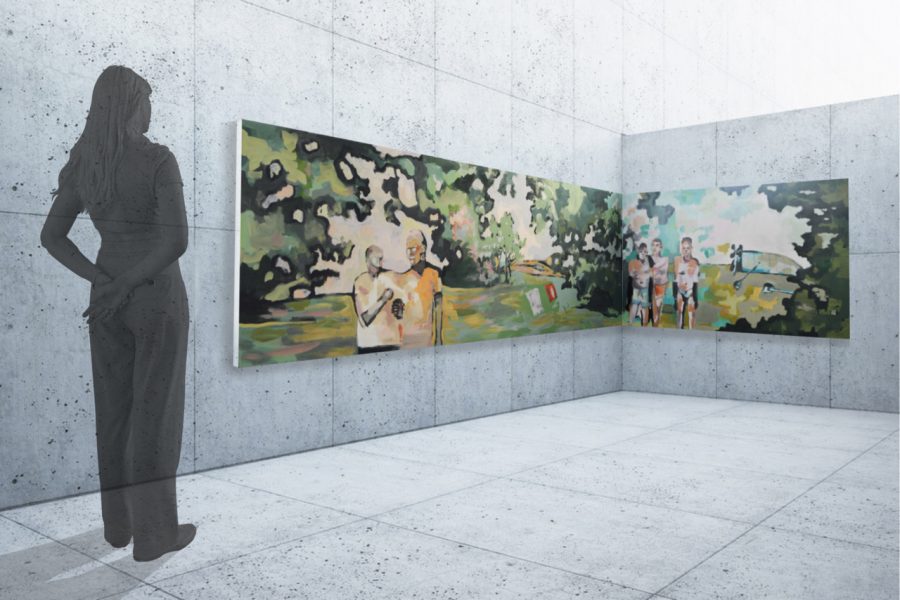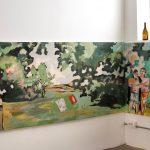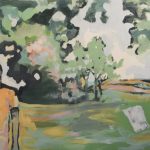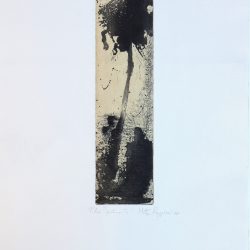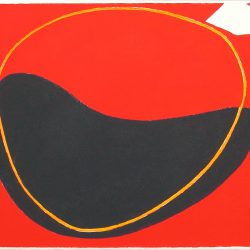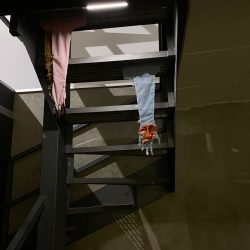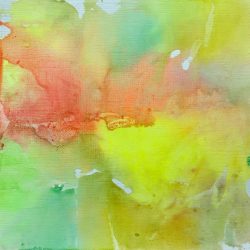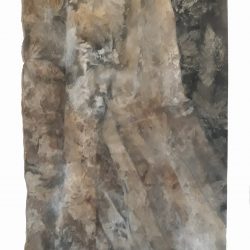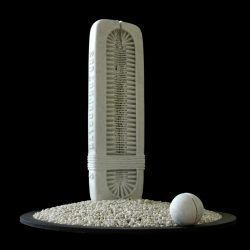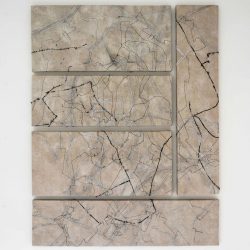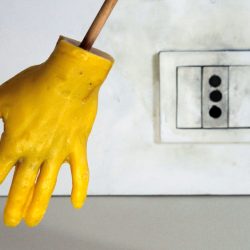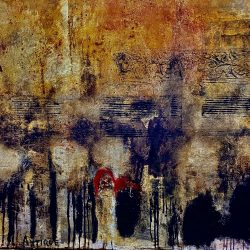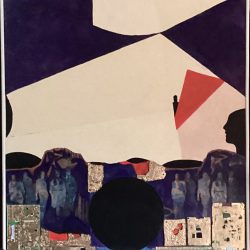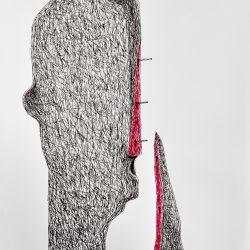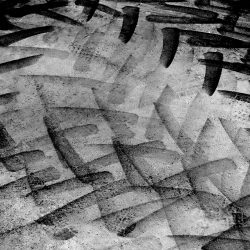work
A mio padre
| category | Painting |
| subject | Abstract |
| tags | |
| base | 523 cm |
| height | 110 cm |
| depth | 4 cm |
| year | 2020 |
The painting reflects on the figure of the artist's father, who wanted to bring some relief to the person who has always believed in her, through an ideal narration of the fundamental passages of his life. The painting can be divided into three scenes, which represent three distinct acts that correspond to three fundamental moments in the life of the father, divided between them through a bucolic foliage.
The first scene, the one located on the right of the work, represents an old family photograph with the father and his brothers as children by the sea, immersed in a moment of serenity and lightheartedness typical of childhood. The artist, however, wanted to represent children as adults, as a desire to express the desire to return to the youth that sometimes one feels growing up, underlining the impossibility of doing it thanks to this distortion (I don't understand this at all !!! ). Furthermore, the two brothers have died and by showing them as adults, they want to cancel their death and give them a rebirth.
The second scene is set in the Tuscan countryside, in summer, a very special period and place full of memories for the protagonist of the scene. On a sunny day, with a little wind blowing the leaves, in the center of the lawn there are two sheets, which represent the presence of two people. In this second act of the father's life, a scene is reproduced that symbolizes the relationship with his partner, the artist's mother, in a distant period of serenity that is now difficult to obtain. A beautiful and idyllic period during which the physical presence of people is not needed; just representing the sheets evokes the feelings felt by the two protagonists.
The last scene features two extremely close men, so fused that their bodies and clothes end up mixing. This union represents a friendship that has accompanied the father all his life, the artist's admiration for the intense, sincere and strong, almost platonic relationship.
The painting occupies two adjacent walls, so that the viewer, located in the corner, is visually incorporated and becomes an integral part of the bucolic scenes.
The first scene, the one located on the right of the work, represents an old family photograph with the father and his brothers as children by the sea, immersed in a moment of serenity and lightheartedness typical of childhood. The artist, however, wanted to represent children as adults, as a desire to express the desire to return to the youth that sometimes one feels growing up, underlining the impossibility of doing it thanks to this distortion (I don't understand this at all !!! ). Furthermore, the two brothers have died and by showing them as adults, they want to cancel their death and give them a rebirth.
The second scene is set in the Tuscan countryside, in summer, a very special period and place full of memories for the protagonist of the scene. On a sunny day, with a little wind blowing the leaves, in the center of the lawn there are two sheets, which represent the presence of two people. In this second act of the father's life, a scene is reproduced that symbolizes the relationship with his partner, the artist's mother, in a distant period of serenity that is now difficult to obtain. A beautiful and idyllic period during which the physical presence of people is not needed; just representing the sheets evokes the feelings felt by the two protagonists.
The last scene features two extremely close men, so fused that their bodies and clothes end up mixing. This union represents a friendship that has accompanied the father all his life, the artist's admiration for the intense, sincere and strong, almost platonic relationship.
The painting occupies two adjacent walls, so that the viewer, located in the corner, is visually incorporated and becomes an integral part of the bucolic scenes.



